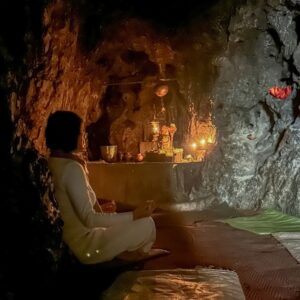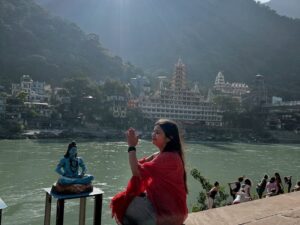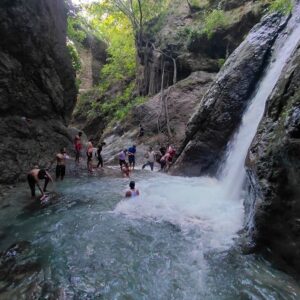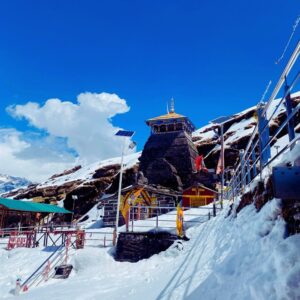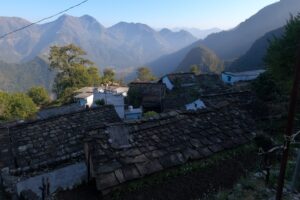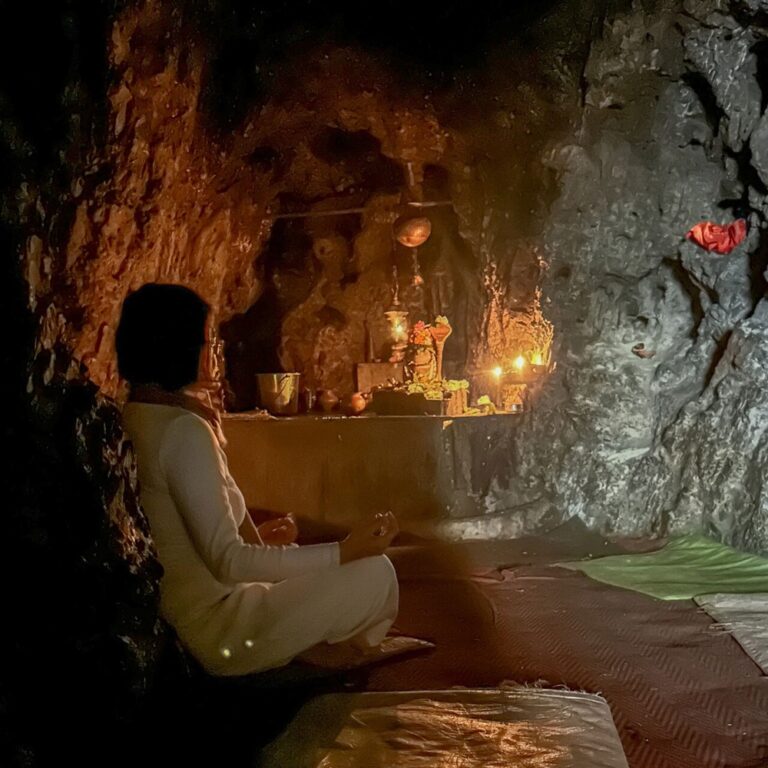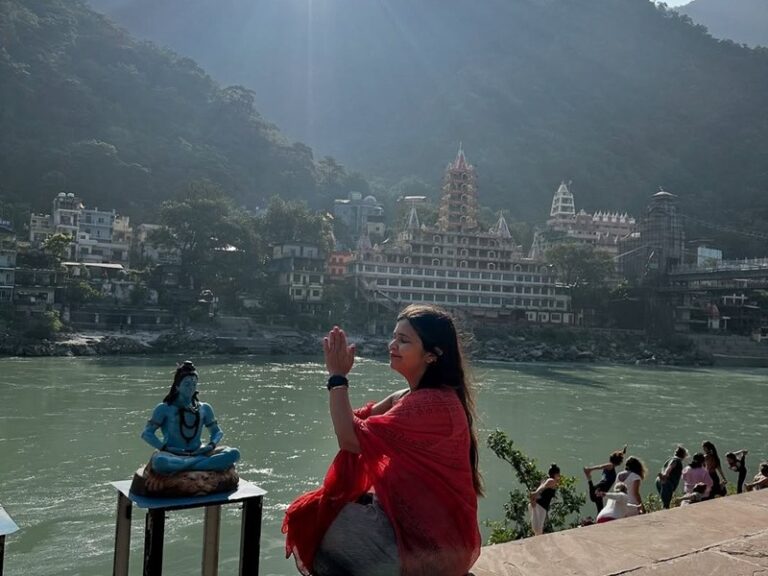Discover Top 6 Most Underrated places in Jaipur Rajasthan, India
Welcome to the Colorful City of Jaipur!
Imagine a place where every street corner tells a story and every alley holds secrets of the past. Jaipur, the Pink City, is filled with famous forts, beautiful palaces, and busy markets, but it’s also home to special places that many people don’t know about. We’re going to take you on a journey to these hidden gems in Jaipur—places that are just as magical but often missed on regular tours!
Overview: Underrated places in Jaipur
Jaipur is one of the most exciting cities in Rajasthan, where many visitors come to see famous attractions. But we’re here to show you the less-explored wonders of Jaipur. From peaceful lakes to old temples, there’s something for everyone, whether you love art, nature, or are just looking for a fun adventure.
Step away from the crowds and find yourself at Chandlai Lake. Here, the calm water and pretty surroundings make it perfect for relaxing. Chandlai Lake is quiet, and if you’re lucky, you might even spot some pretty birds flying by!
Not far away is Galta Temple, which is also called the Monkey Temple. Tucked away in nature, this temple is like a hidden treasure. Surrounded by hills, it’s a peaceful place where you can watch monkeys play and explore.
Next, drive a bit outside the city to discover Kanota Dam. With breathtaking views of the countryside, it’s a great place to relax and enjoy nature. The water reflects the sky, making it look like a beautiful painting.
Then there’s Sambhar Lake! Known as the biggest saltwater lake in India, it’s perfect for people who love watching birds. Flamingos and storks often visit, making it a paradise for nature lovers and photographers.
Travel back in time at Abhaneri Village. This little village has ancient ruins and charming stepwells. The famous Chand Baoli is one of the oldest stepwells, with thousands of steps going down into the earth. Just across is the Harshata Mata Temple, where you can see beautiful carvings.
For those looking for an adventure, Bhangarh Fort is a spooky place with many ghost stories! It’s known as one of the most haunted places in India, and many people come here to feel its mysterious atmosphere.
As you explore Jaipur’s secret places, remember that travel is about discovering places and stories beyond what we see in brochures. Jaipur is a city of history, nature, and magic just waiting for you to explore. So pack your bags, grab your camera, and get ready for an adventure you’ll never forget!
Suggested Read: Discover the Pink City of India: Why is Jaipur Called Pink City in India?

1. Galta Temple: Nature’s Tranquil Retreat
Regarded as a highly sacred pilgrimage site with immense historical significance, Galtaji Temple is located approximately 10 kilometers east of Jaipur.
This temple complex, primarily centered around the main temple, is nestled within a narrow crevice of the Aravalli hills and comprises a series of temples and sacred tanks known as Kunds, where pilgrims come to bathe and seek purification.
Highlights of Galtaji Temple
- Sacred Kunds: The temple features several Kunds filled by a natural spring that flows down the hills, with Galta Kund being the holiest among them. This sacred water source has never dried up, making it a focal point for devotees.
- The Monkey Temple: Known as “The Monkey Temple” or “Galwar Bagh,” Galtaji is famous for its large population of rhesus macaque and langur monkeys. Visitors should be cautious with food items, as the monkeys are notorious for snatching belongings and snacks.
- Festivals and Celebrations: The temple attracts thousands of devotees during festivals like Makar Sankranti and Kartik Poornima, when pilgrims gather to take holy dips in the Kunds, surrounded by chants and hymns, creating a vibrant atmosphere.
- Hiking Trails: For those seeking adventure, a hiking trail from the western tip of Jaipur leads to Galtaji. The 30-45 minute trek offers stunning views of the city and passes by the Sun Temple, known for its breathtaking sunset views.
- Historical Significance: Built in the 18th century by Diwan Rao Kriparam, an attendant of Maharaja Sawai Jai Singh II, Galtaji has been a spiritual hub for Vaishnavites and Ramanandi Hindus long before the temple’s construction. The site is steeped in history, with connections to notable figures like Mughal Emperor Akbar and the poet Tulsidas.
Architectural Features
Galtaji Temple showcases a blend of Indian classical and Rajasthani architecture, constructed from pink sandstone. The complex includes beautifully frescoed ceilings and intricately carved pillars. Noteworthy temples within the complex include:
- Shri Gyan Gopal Ji Temple: Known for its serene ambiance and a beautiful idol of Lord Krishna.
- Shri Sitaram Ji Temple: The largest temple at Galtaji, renowned for its likeness of Lord Rama and Lord Krishna.
- Hanuman Temple: Famous for its eternal flame, believed to have been burning for centuries.
Visiting Galtaji Temple
-
- Timings: Open daily from 5:00 AM to 9:00 PM.
- Entry Fee: Free for all visitors, regardless of nationality or faith.
- Best Time to Visit: The ideal months are from February to March and October to December, avoiding the extreme summer heat of Rajasthan.
Pro Tips for Visitors
-
- Be cautious of touts who may claim there is an entry fee.
- Remove footwear before entering the temple, so opt for comfortable slip-on shoes.
- Avoid eating in the open to prevent monkey incidents and dress modestly to respect the sanctity of the site.
Nearby Attractions
-
- Krishna Temple: Integral to the Vaishnavite community, this temple aligns with ISKCON teachings.
- Surya Temple: Offers serene views and tranquility, located at the highest point of the complex.
- Balaji Temple: A peaceful shrine within the Galta Ji complex.
- Sitaram Ji Temple: Surrounded by monkeys, this temple is dedicated to Lord Ram.
- Sisodia Rani Ka Bagh: A beautiful garden nearby, perfect for a leisurely visit.
Galtaji Temple not only serves as a spiritual haven but also offers visitors a rich tapestry of history, culture, and breathtaking natural beauty, making it a must-visit destination for anyone traveling to Jaipur.
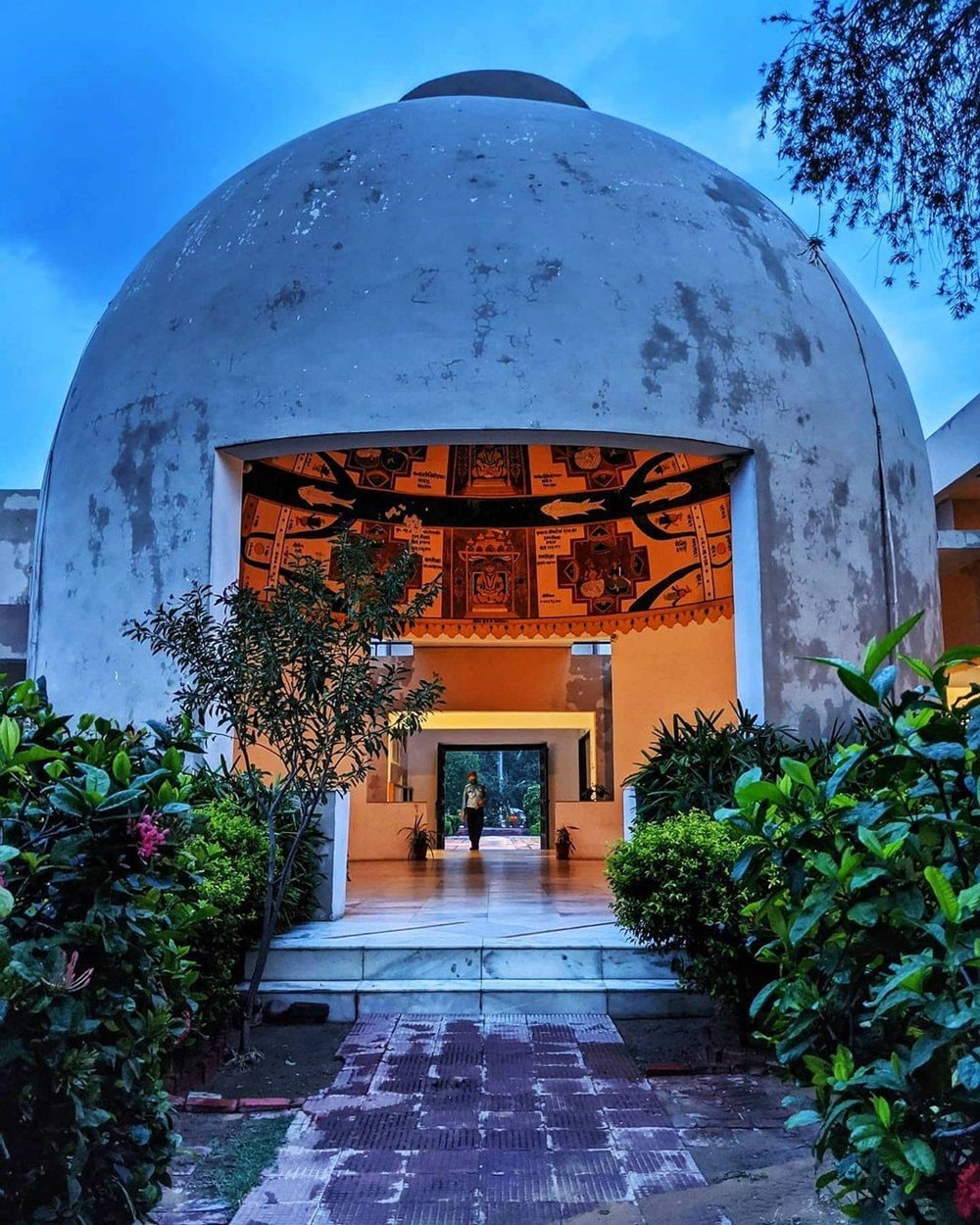
2. Jawahar Kala Kendra: A Haven for Art Lovers
Jawahar Kala Kendra, designed by the renowned architect Charles Correa, stands as a modern homage to Jaipur’s original city plan, conceived in the mid-17th century by Maharaja Jai Singh II.
A scholar, mathematician, and astronomer, Jai Singh II crafted a city layout guided by the Shipla Shastras, rooted in the ancient Vedic mandala of nine squares (or houses) representing the nine planets, including the mythical Ketu and Rahu.
In adapting this celestial structure, Correa intricately reinterprets the concept of the Navagraha (nine planets). The design pivots one square to align with the original city plan and creates a welcoming entrance, while also amalgamating two central squares to reflect the integration found in Jaipur’s layout.
The walls that define these squares, standing at 8 meters high, echo the fortifications of Jaipur’s old city, creating a dialogue between the contemporary and the historical.
Symbolism and Spatial Configuration
The external façade of Jawahar Kala Kendra is adorned with symbols of the planets, inlaid in white marble and granite against the backdrop of red sandstone. Internally, each square corresponds to the mythical qualities associated with its respective planet, creating thematic spaces throughout the complex:
-
-
- Mars (Mangal Mahal): Represents power and houses administrative offices.
- Jupiter (Guru): Symbolizes knowledge, forming the museum library.
- Venus: As the artistic representation, encloses the theater complex.
- The Sun: Centrally located, manifests in a stepped tank that serves as a reservoir of knowledge, meeting, and reflection.
-
Architectural Experience and Movement
- The experience of traversing Jawahar Kala Kendra is one of dynamic spatial density. The buildings within the complex merge into a cellular reordering, resembling architectural parasites that lean against the surrounding high walls.
- This creates unique courtyards that embody the functions housed within, emphasizing the interrelationship between architecture and purpose.
- The museum’s design redefines cultural display, suggesting that heritage is an accidental encounter. Visitors navigate through diverse spaces, encountering walls adorned with art and craft that evoke the rituals of creativity and tradition.
- This approach challenges conventional museum design, advocating for an exploratory experience that encourages discovery and personal interpretation.
A Contrast of Internal and External Worlds
- While the external structure presents a severe, reductive delineation, the internal architecture is playful and whimsical, accommodating a variety of functions and artistic expressions.
- The high parapets encase a lively interior characterized by ongoing adaptations and reorganizations, mirroring the vibrancy of Jaipur’s artistic legacy.
- As one approaches Jawahar Kala Kendra through framing portals reminiscent of Jaipur’s old city walls, the center resonates with a contemporary historical narrative.
- It serves as a bridge between the past and present, embodying the spirit of cultural expression in Jaipur while inviting visitors to engage with its artistic and historical richness.
Hours: Open from 10 AM to 5 PM every day, and entry is free. The center is only a 15-minute drive from Jaipur’s Pink City, making it easy to visit.
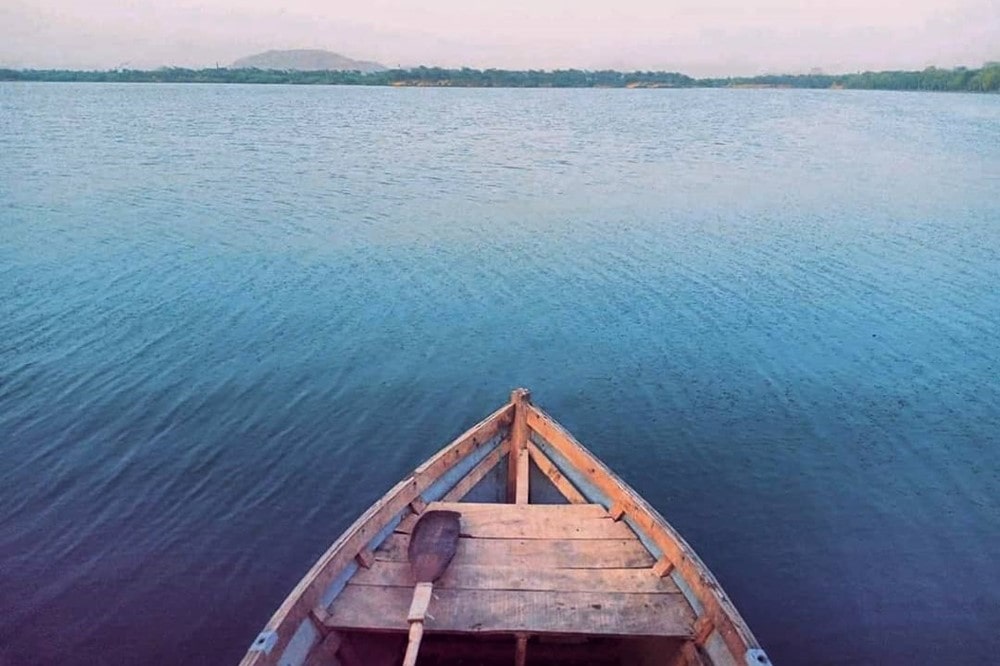
3. Kanota Dam: A Scenic Escape
Kanota Dam, located near Jaipur, was initiated in 1984 to address severe water shortages in the region. The Dhund River, a seasonal water source, passes through this area but has limited capacity for irrigation.
The dam, constructed on a branch of the Dhund River, was envisioned as a vital water reservoir to transform the arid surroundings into a vibrant, thriving landscape.
After years of careful planning and construction, Kanota Dam was completed in 2001, bringing much-needed water resources to the region and serving as a scenic destination.
Over time, Kanota Dam has become more than a water reservoir. Its picturesque location, encircled by rolling hills and glistening waters, has made it an appealing spot for travelers seeking an escape from the city. The dam has evolved into a popular getaway, especially for nature lovers and families.
Recent Renovations and Tourism Development
Recognizing Kanota Dam’s tourism potential, the Rajasthan government has launched a restoration and development initiative to enhance its appeal as an adventure tourism destination. The project, with an investment of approximately Rs 2.48 crore, includes several improvements:
-
-
- A 600-meter-long parapet wall
- A canopy
- A bird observation platform
-
These additions aim to boost Kanota Dam’s appeal for eco-tourism, while supporting local agriculture and improving water security. The project is expected to strengthen the structural integrity of the dam, helping sustain its benefits for years to come.
The Overflow Phenomenon
- A unique feature of Kanota Dam is its periodic overflow, referred to locally as the “sheet of water” (chadar). Occurring approximately once every 23 years, this spectacle draws numerous visitors eager to witness the powerful flow of water spilling over the dam.
- The last recorded overflow was in 2001, and each occurrence transforms the dam into a beautiful sight that families enjoy as a natural picnic spot.
Location and Accessibility
- Kanota Dam is situated about 28 kilometers from Jaipur, nestled in the scenic Aravali Ranges near NH-11. This location provides visitors with a scenic retreat away from Jaipur’s bustling cityscape, while still being within easy driving distance.
- The surrounding landscape and peaceful atmosphere make it an ideal spot for a day trip or a leisurely outing, perfect for travelers looking to explore Jaipur’s offbeat natural attractions.
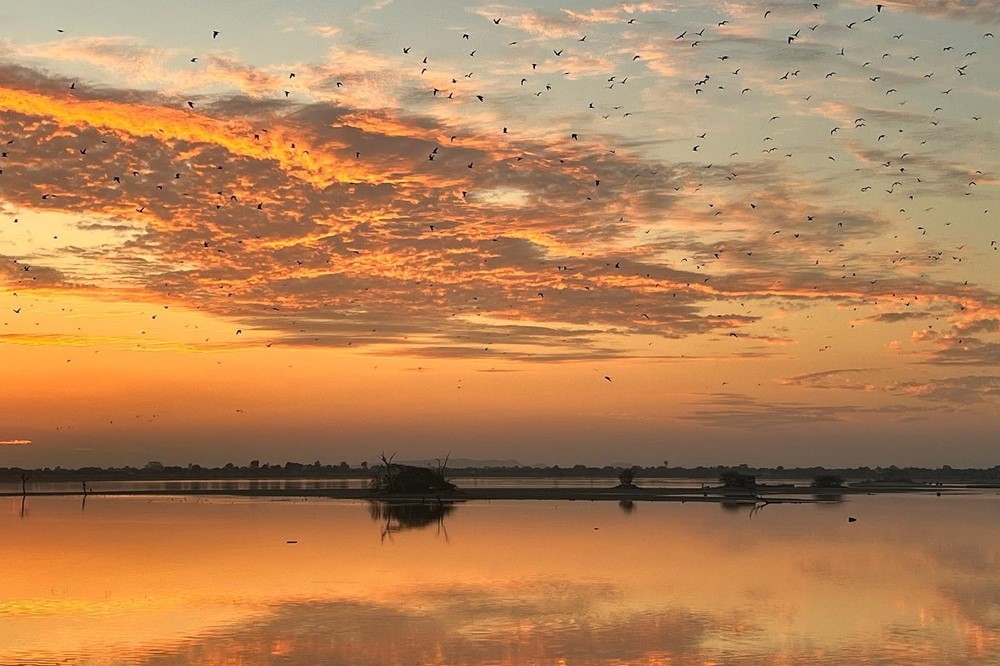
4. Chandlai Lake: A Peaceful Getaway
Location and Overview
- Chandlai Lake, situated approximately 30 kilometers from central Jaipur in the village of Chandlai, is a serene escape for nature lovers and bird enthusiasts. The lake, established in 1872 as the second lake after Jal Mahal under the Jaipur Lake Development Act, offers stunning scenic views, especially during the early morning sunrise.
Best Time to Visit
- The ideal time to explore Chandlai Lake is during the winter months, from November to March. This season attracts thousands of migratory birds, making it a prime spot for picnics, bird watching, and photography. The vibrant colors of the birds against the tranquil backdrop create an unforgettable experience.
Getting There
- Reaching Chandlai Lake is convenient by car or two-wheeler, as it is located near National Highway 12. The drive from Jaipur takes about an hour, making it a perfect destination for a family outing or a gathering with friends. If you enjoy cycling, this picturesque route is also great for a cycling adventure around the lake.
My Experience at Chandlai Lake
Excited to finally visit Chandlai Lake, I planned a trek for a weekend in December with a few friends. We set off at 5 AM to catch the breathtaking sunrise. After picking up my friends, we arrived at the lake around 6:30 AM.
Finding the entrance to the lake was a bit challenging, as there was no clear path, but after some searching, we located a suitable spot to park.
The vast expanse of the lake, surrounded by soft sand dunes, was mesmerizing. The calm ambiance and the gentle chirping of birds instantly made us feel at peace, though a layer of fog hung over the lake, adding to the mystique.
After walking around to find a perfect viewing spot, we settled on a cemented square that provided a beautiful panoramic view of the lake. With my camera gear in hand, I eagerly awaited the sunrise, which gradually cleared the fog and revealed flocks of birds gracefully flying across the water—a paradise for bird photographers.
During our visit, we encountered other bird watchers armed with binoculars. Engaging in conversation with them enriched our experience, as they shared fascinating insights about the various bird species in the area.
Concerns
Despite the enchanting scenery, I noticed that the lake’s surroundings were littered with garbage, and the water had an unpleasant smell. It was evident that the lake lacked proper maintenance, which detracted from its natural beauty. With more care and attention, Chandlai Lake could transform into one of the most picturesque tourist spots for locals and visitors alike.
Tips for Visiting Chandlai Lake
-
-
- Timing: Plan your visit for the morning or evening to enjoy the best views and bird activity.
- Accessibility: Cars cannot access the sandy areas around the lake; consider biking or cycling to explore fully.
- Bring Supplies: Pack snacks and water, as there are no shops nearby.
- Equipment: If you’re interested in bird watching or photography, bring binoculars or a zoom lens to catch the best shots.
-
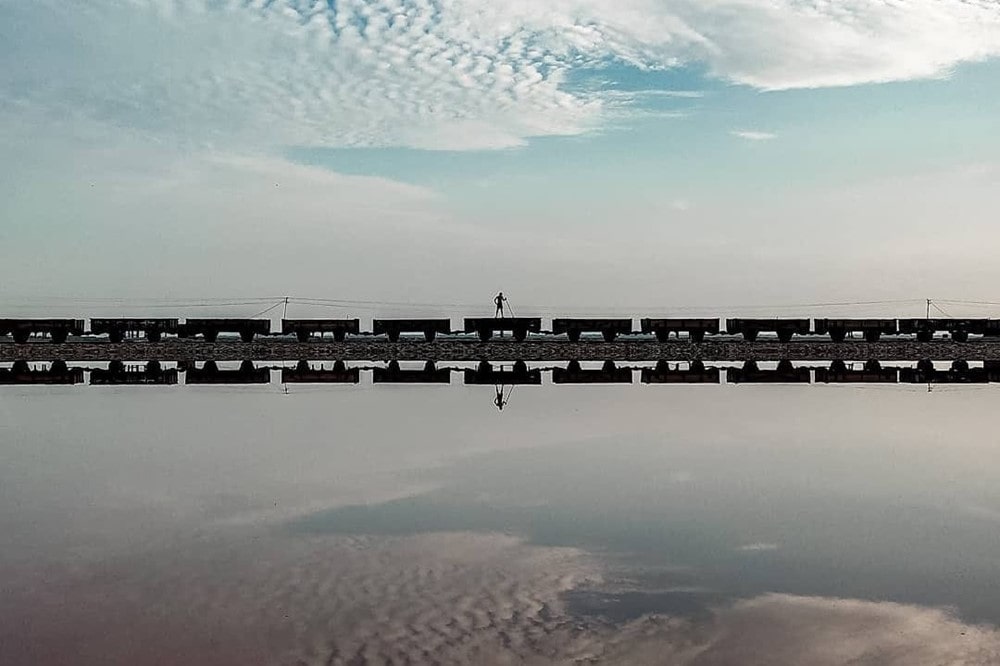
5. Sambhar Lake: A Natural Marvel
Nestled in Rajasthan, Sambhar is a quaint town steeped in history and natural beauty, renowned for being home to India’s largest saline wetland, Sambhar Lake. This unique destination offers a fascinating blend of mythology, history, and rich biodiversity, making it a captivating stop for travelers.
Historical Significance
The roots of Sambhar trace back to the Mahabharata, where it is mentioned as part of the territory ruled by the demon king Vrishparva. It is also celebrated as the site of the wedding between Devayani, the daughter of priest Sukracharya, and King Yayati.
According to historical records, Sambhar was established by Raja Vasudev of the Chauhan dynasty in 551 AD. Over the centuries, the town came under the influence of various rulers, including the Sindhias, Marathas, and Mughals, before being reclaimed by the Rajputs in 1709. Notably, in 1870, the rulers of Jaipur and Jodhpur leased the lake to the British.
The name “Sambhar” is derived from Shakambhari, the 2500-year-old tutelary deity of the Chauhan Rajputs, particularly associated with Prithviraj Chauhan. The town showcases colonial-era infrastructure, including heritage buildings, a Salt Museum, and a Circuit House, offering visitors a glimpse into its storied past.
Sambhar Lake: A Ramsar Site
Sambhar, a quaint salt town steeped in history and myth, offers visitors a unique blend of cultural heritage and stunning natural landscapes. Nestled in Rajasthan, this destination has roots dating back to the legendary Mahabharata and boasts India’s largest saline wetland, Sambhar Lake, a UNESCO Ramsar Site. From ancient temples to vibrant birdlife, Sambhar is a treasure trove for history enthusiasts, nature lovers, and adventure seekers alike.
Historical Significance
A Glimpse into the Past
The town of Sambhar traces its origins to the 551 AD establishment by Raja Vasudev of the Chauhan dynasty. Historically, it has seen the rule of various powers, including the Mughals, Marathas, and Rajputs, who collectively shaped its cultural landscape. Notably, the town’s name is derived from the tutelary deity Shakambhari, revered by the Chauhan Rajputs, who also significantly influenced the region’s history.
Shakambhari Mata Temple
A pivotal site in Sambhar is the Shakambhari Mata Temple, believed to be over 2500 years old. According to legend, the goddess transformed the region from a land of precious metals into the salt lake it is today, as the people prayed for peace. This temple, situated near Sambhar Lake, is a sacred site that attracts devotees, especially during the grand fair held in her honor.
Devayani Kund & Sharmistha Sarovar
Nearby, Devayani Kund, often referred to as the “little Pushkar,” is steeped in Mahabharata lore as the marriage site of Devayani and King Yayati. Sharmistha Sarovar, another significant water body, is named after Sharmistha, the friend of Devayani, linking the area to ancient tales of love and sacrifice.
Natural Wonders
Sambhar Lake
- Spanning 230 square kilometers, Sambhar Lake is a vital ecological site, especially renowned for its vibrant flamingo population that migrates from northern Asia during the winter months. The lake’s ecosystem bursts into life from November to February, attracting birdwatchers and nature enthusiasts eager to witness the cacophony of avian species.
Flora and Fauna
- Apart from flamingos, Sambhar Lake is home to diverse wildlife, including foxes and blue bulls, thriving in the 24,000-hectare area surrounding the lake. The vibrant landscape and unique salt pans present an enchanting backdrop for photography and exploration.
Activities and Attractions
Adventure and Heritage
- Sambhar is not just a natural paradise but also an adventure hub. Activities such as cycling, camping, and motorsports are popular among thrill-seekers. The vast salt beds and scenic vistas create an ideal environment for biking and off-road adventures.
Heritage Walks
- Explore Sambhar’s rich heritage through guided walks that weave through historic havelis, temples, and local bazaars. Highlights include the Sun Temple, Joshiyon ki Gali, and the Circuit House, an architectural remnant of British colonial influence.
Culinary Delights
- Don’t miss the opportunity to taste Sambhar’s famous Feeni Sweet and shop for traditional jewelry at local markets.
Getting There
Accessibility
Sambhar is easily accessible from Jaipur, located just 90 km away. Travelers can opt for road trips via NH 8, take state-run buses, or enjoy train rides from nearby cities like Jodhpur and Nagaur. Local transportation options include tonga rides and auto-rickshaws, making it convenient to explore the town and its surroundings.
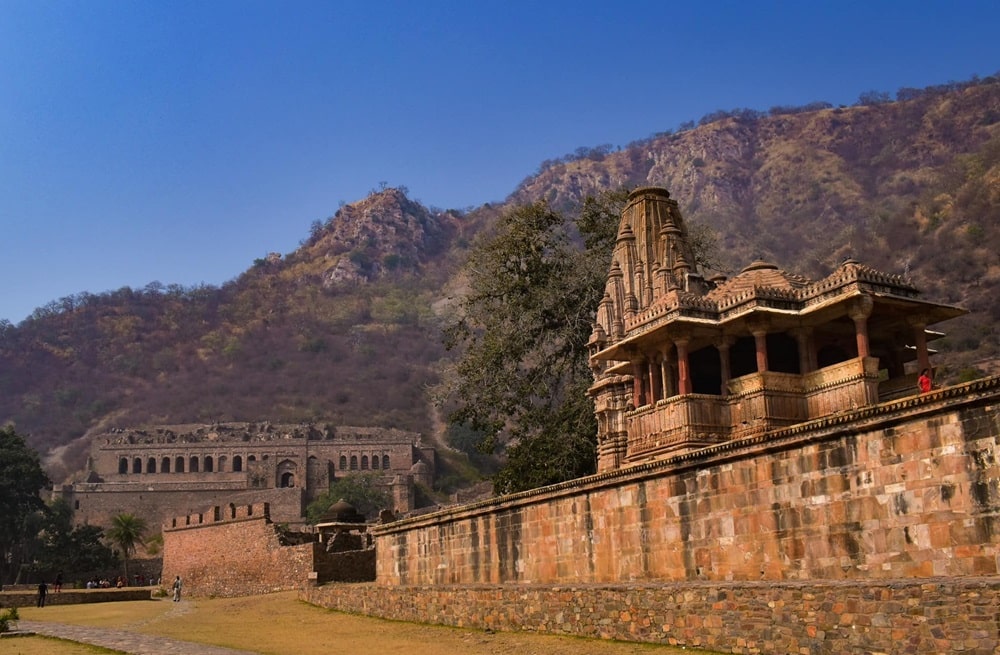
6. Bhangarh Fort: Exploring Rajasthan’s Haunted History
Nestled in the Alwar district of Rajasthan, approximately 80 kilometers from Jaipur, Bhangarh Fort stands as a testament to the grandeur of 16th-century architecture. Built by Bhagwant Das, this fort is renowned not only for its historical significance but also for its eerie reputation, often being cited as one of the most haunted places in India.
The Legend of Princess Ratnavati
The fort’s haunted lore is deeply intertwined with the tragic tale of Princess Ratnavati, the daughter of Chatr Singh. Renowned for her beauty and captivating personality, Ratnavati was revered throughout Rajasthan, contrasting sharply with her stepbrother, Ajab Singh, who was not as well-liked.
As tales of her enchanting beauty spread far and wide, Ratnavati received numerous marriage proposals. However, her fate took a dark turn due to the obsession of a tantrik priest skilled in the arts of black magic. Desperate to win her affection, the tantrik devised a sinister plan to cast a spell on the princess.
The Curse and its Consequences
The priest noticed Ratnavati’s maid purchasing perfume for her and seized the opportunity to enchant the potion. He believed that with this spell, Ratnavati would fall in love with him. However, the wise princess sensed his treachery. When she discovered the plot, she hurled the enchanted perfume bottle away, which miraculously transformed into a massive boulder that struck the tantrik, crushing him.
As he lay dying, the tantrik uttered a curse that would seal the fate of Ratnavati, her family, and the entire village. Soon after, a fierce battle broke out between the forces of Bhangarh and Ajabgarh, culminating in the tragic death of Princess Ratnavati and a significant portion of the army.
Haunting Restrictions
Due to the fort’s notorious reputation, entry to Bhangarh Fort is strictly prohibited from sunset to sunrise. Locals and visitors alike believe that the spirits of those who perished in the conflict, especially that of Ratnavati, still linger within the fort’s ancient walls.
Getting there:
You can catch a bus from Jaipur to Thanagazi or Dausa bus station, then walk or take a taxi for the final stretch to Bhangarh Fort.
These places in Jaipur show just how many hidden wonders you can find beyond the usual tourist spots! Whether you’re exploring temples, enjoying art, or relaxing by a lake, Jaipur has surprises waiting just for you.
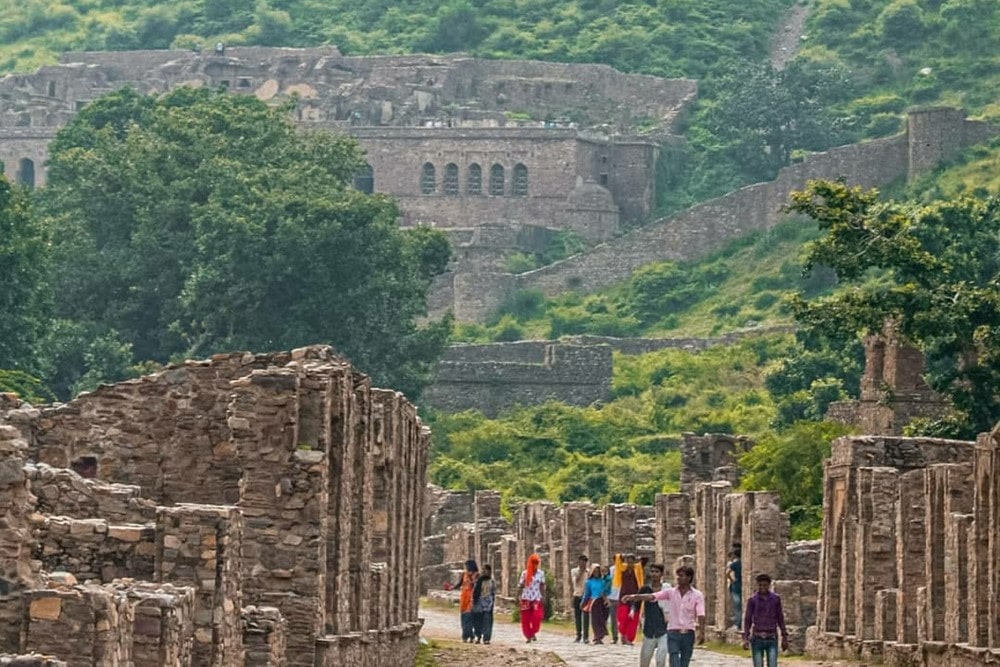
Jaipur City
Jaipur, famously known as the Pink City, is a treasure trove of iconic attractions and lesser-known gems that offer a fresh perspective on Rajasthan’s cultural richness. For travelers eager to go beyond Jaipur’s famous landmarks, the city’s offbeat destinations promise unique experiences and discoveries.
Nature Retreats
For those who love nature, Chandlai Lake and Sambhar Lake are peaceful escapes near Jaipur. Chandlai Lake, only 30 kilometers away, is a birdwatcher’s haven where you can witness thousands of migratory birds. Meanwhile, Sambhar Lake, India’s largest saltwater lake, offers serene views and is a hub of salt production, located just 65 kilometers from the city. These scenic lakes are ideal for a day of relaxation or a peaceful weekend getaway.
Art and Culture
If you’re inclined towards the arts, Jawahar Kala Kendra is a must-visit. This cultural center, designed by architect Charles Correa, is a vibrant hub showcasing Rajasthan’s artistic heritage through exhibitions, museums, and events. It’s an inspiring spot for art lovers to soak in traditional and modern Rajasthani artistry, all within a short drive from Jaipur’s bustling Pink City.
Historical Marvels
For a step into Rajasthan’s mysterious past, Bhangarh Fort offers an intriguing experience. Known for its ancient ruins and eerie charm, this fort lies slightly off the beaten path and invites visitors to explore its historic gates, temples, and havelis. The fort is best visited in the winter months to enjoy its ambiance without the scorching summer heat.
Natural Escapes and Scenic Vistas
If you’re looking for scenic views and a peaceful outing, Kanota Dam makes for a picturesque day trip just 21 kilometers from Jaipur. Nestled among the Aravalli hills, it’s ideal for picnics, camping, and outdoor activities, especially in the cooler months.
Conclusion
Jaipur’s lesser-known destinations offer travelers the opportunity to experience the city’s diversity beyond its popular monuments. Whether you seek serene natural settings, a glimpse into local art and culture, or a journey through history, these offbeat places reveal the city’s many facets. So, pack your bags and set out to explore Jaipur’s hidden gems—each promising an unforgettable chapter in your travel story.
Underrated places in Jaipur Underrated places in Jaipur Underrated places in Jaipur Underrated places in Jaipur Underrated places in Jaipur Underrated places in Jaipur Underrated places in Jaipur Underrated places in Jaipur Underrated places in Jaipur Underrated places in Jaipur Underrated places in Jaipur Underrated places in Jaipur Underrated places in Jaipur Underrated places in Jaipur Underrated places in Jaipur Underrated places in Jaipur Underrated places in Jaipur Underrated places in Jaipur Underrated places in Jaipur Underrated places in Jaipur Underrated places in Jaipur Underrated places in Jaipur Underrated places in Jaipur Underrated places in Jaipur Underrated places in Jaipur Underrated places in Jaipur Underrated places in Jaipur
Underrated places in Jaipur Underrated places in Jaipur Underrated places in Jaipur Underrated places in Jaipur Underrated places in Jaipur Underrated places in Jaipur Underrated places in Jaipur Underrated places in Jaipur Underrated places in Jaipur Underrated places in Jaipur Underrated places in Jaipur Underrated places in Jaipur Underrated places in Jaipur


